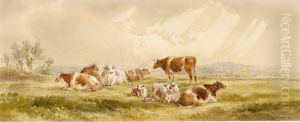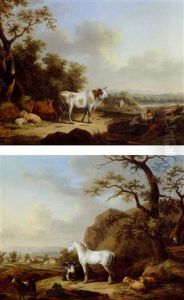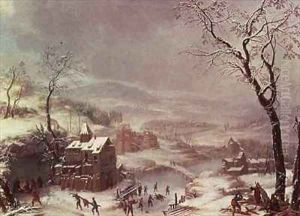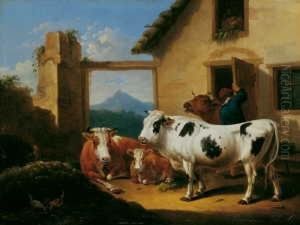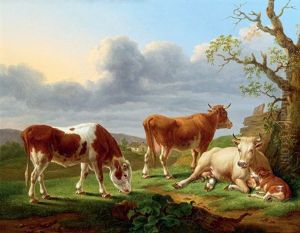Johann the Yngr Dallinger von Dalling Paintings
Johann Dallinger von Dalling, also known as Johann the Younger Dallinger von Dalling, was a painter born in 1577 in Linz, Austria. His family background was one of artistic tradition, as he descended from a line of artists from the Dallinger family, which was known for its painters and sculptors in Upper Austria. Johann the Younger was the son of Johann the Elder Dallinger von Dalling, who was also a painter, and this familial connection played a significant role in shaping his artistic career.
Johann the Younger's early life was marked by his apprenticeship under his father, where he learned the basics of painting and developed his skills. During this period, he would have been exposed to the techniques and styles prevalent in late 16th-century Austrian art, which was characterized by a blend of late Renaissance and Mannerist influences. After his apprenticeship, Johann the Younger likely traveled within Europe to further his education, a common practice among artists of the time.
By the early 17th century, Johann the Younger had established himself as a notable artist in his own right. His works primarily consisted of religious themes, as was typical of the period, with altarpieces and frescoes being among his most common commissions. He worked extensively for churches and monasteries in and around Upper Austria, contributing to the rich artistic heritage of the region.
Despite his work and influence, detailed records of Johann the Younger's life and career are scarce. Many artists of this era did not leave extensive documentation, and their lives must be pieced together from the works they left behind and the occasional mention in contemporary accounts. As such, much of Johann the Younger's personal life and the full scope of his oeuvre remain somewhat obscure.
Johann Dallinger von Dalling passed away in 1647, leaving behind a legacy as part of a family of artists that had a lasting impact on the art of Upper Austria. His works would have contributed to the artistic landscape of the region and influenced the generations of painters that followed. Though not as widely known today, his contribution to the art world during his time was significant, and his works, where they survive, continue to be studied for their representation of early 17th-century Austrian art.
